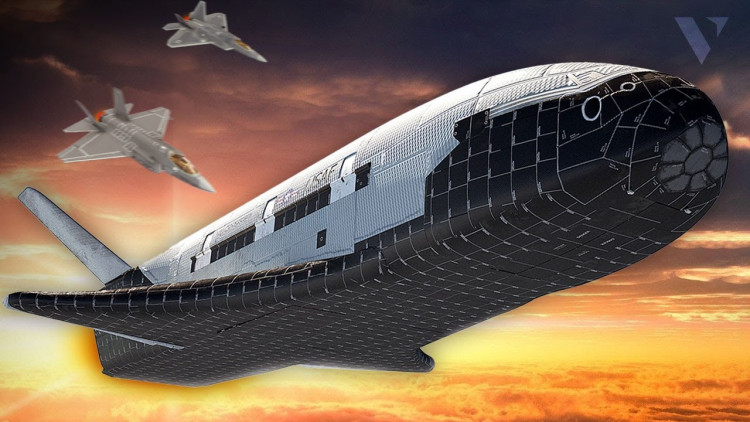The X-37B robotic space plane of the United States military is approaching a mission-duration record. On May 17, 2020, the X-37B launched into Earth orbit on the program's sixth mission, known as Orbital Test Vehicle-6 (OTV-6).
The Space Force mini-shuttle has now been in orbit for 773 days. That's just a week short of the X-37B record of 780 days set on OTV-5. (That program record doesn't come close to the overall mark for an orbital stay; for example, the Landsat-5 satellite observed Earth from orbit for 29 years.)
The following are the previous X-37B missions, each of which lasted longer than its immediate predecessor:
-
OTV-1 launched on April 22, 2010, and landed on Dec. 3, 2010, spending over 224 days in orbit.
-
OTV-2 launched on March 5, 2011, and landed on June 16, 2012, spending over 468 days in orbit.
-
OTV-3 launched on Dec. 11, 2012, and landed on Oct. 17, 2014, spending over 674 days in orbit.
-
OTV-4 launched on May 20, 2015, and landed on May 7, 2017, spending nearly 718 days in orbit.
-
OTV-5 launched on Sept. 7, 2017, and landed on Oct. 27, 2019, spending nearly 780 days in orbit.
It is unknown when and where OTV-6 will land on Earth. OTV-1, OTV-2, and OTV-3 touched down at Vandenberg Space Force Base in California, while OTV-4 and OTV-5 landed at NASA's Kennedy Space Center in Florida.
While the primary orbital agendas of the Boeing-built robotic space plane are classified, some of its onboard experiments were revealed prior to launch.
One such experiment, from the United States The Naval Research Laboratory (NRL) is investigating the conversion of solar energy into radio frequency microwave energy. The Photovoltaic Radio-frequency Antenna Module, or PRAM for short, is the name of the experiment.
We also know that OTV-6 included the launch of FalconSat-8, a small satellite developed in the United States. Air Force Academy and the Air Force Research Laboratory to conduct several orbital experiments.
Furthermore, two NASA experiments are stowed onboard the space plane to investigate the effects of the space environment on a materials sample plate and seeds used to grow food.
OTV-6 is the first X-37B mission to host experiments in a service module. The service module is a vehicle attachment that allows additional experimental payload capability to be carried to orbit.
"The X-37B is one of the world's newest and most advanced re-entry spacecraft, designed to operate in low Earth orbit, 150 to 500 miles [240 to 800 kilometers] above the Earth," Boeing wrote in a vehicle description(opens in new tab). "The vehicle is the first since the space shuttle with the ability to return experiments to Earth for further inspection and analysis. This United States [Space] Force unmanned space vehicle explores reusable vehicle technologies that support long-term space objectives."
Boeing stated that the X-37B was designed to fly missions lasting up to 270 days. Except for the first flight, every subsequent flight has exceeded that supposed limit.






